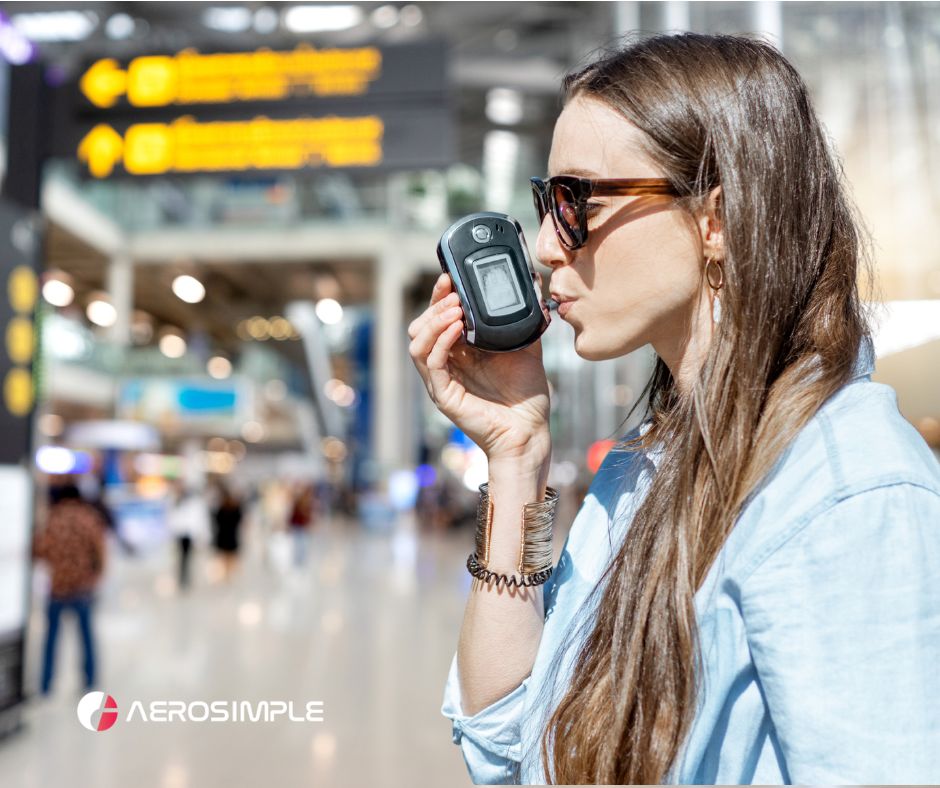The Ultimate Guide to Airport Safety Self-Inspection
.png)
The airport owner, operator, or a duly authorized representative is responsible for self-inspection. The airport manager or operations supervisor is usually in charge of ensuring overall airport ground safety. Pavement areas, safety areas, markings, signs, lighting, aircraft rescue and firefighting, fuelling operations, navigational aids, ground vehicles, impediments, public protection, animal hazard management, construction, and snow and ice control should all be given top priority.

Those assigned to conducting airport inspections can be responsible for inspecting regions that have been allotted to particular air carriers, fixed base operators, or other tenants. At Part 139 airports, however, the FAA will hold the certificate holder ultimately responsible for the airport's safe operation.
In this article, we are going to talk about the complete guide to airport safety self-inspection. This thoroughly covers everything that you need to know to improve your airport management.
Types of Self-Inspections
1. Regularly scheduled
Regularly scheduled self-inspections happen daily, except as otherwise required by the ACM. In order to have a minor influence on airport operations, the airport should be inspected at least daily at times when aircraft activity is low. At airports that serve air carriers after dark, a portion of this inspection should be done during the hours of darkness.
2. Continuous surveillance
Any time employees are in the air operations area, they should inspect those activities and facilities that have been recognized as requiring continuous surveillance. Hazardous situations can arise at any time and for any length of time.
3. Periodic
Periodic condition inspections of activities and facilities can be carried out on a regular basis but not daily. Depending on the activity or facility, the time interval could be weekly, monthly, or quarterly.
4. Special
After receiving a complaint, or when an uncommon situation or unexpected occurrence occurs at the airport, such as a sizable meteorological event, an accident, or an incident, special inspections of operations and facilities should be done. After construction, special checks should be carried out to guarantee that there are no harmful conditions related to the construction.
If corrective activities are required, a special inspection should be done before the construction personnel leaves the airport. Special assessments should be recorded in the appropriate sections of the routine inspection checklist.
Inspection Items
1. Lighting
Lighting is critical for safe airport operations at night and during periods of low visibility. Lights can be found on the pavement or along its edges and come in various shapes, sizes, colors, and arrangements. In order to examine lighting systems when they provide the principal visual aid for pilots, it is best to inspect them during periods of darkness.
The focus of the assessment should be on the airport operator's illumination. However, the inspector should keep an eye on any lighting owned or controlled by others and report any concerns to the proper responsible owner as soon as possible.
2. NAVAIDS
The visual navigational aids owned by the airport operator should be the focus of the NAVAID inspection. However, the inspector should keep an eye on any navigational aids owned or administered by others, such as the FAA, and report any concerns to the NAVAID owner right away.
3. Fueling
A quick check for the most prevalent difficulties involving compliance with local fire safety rules at fuel storage facilities and with mobile fuelers should be the focus of the daily inspection on aircraft fueling operations. Security, fire protection, general housekeeping, and fuel distribution facilities and processes should all be included in the inspection.
4. Paved and unpaved areas
The state of the pavement surfaces is critical to airport safety. To guarantee that the pavement surfaces are clear, daily inspections should be done prior to flight operations. A daily inspection of all paved areas that are the responsibility of the airport operator or as defined in the FAA-approved Airport Certification Manual should be undertaken at a minimum.
Inspection Checklist

1. Runway pavement
Determine whether any cracks are large enough to affect an aircraft's directional control. These fissures should be reported and monitored. Determine if any gaps exist that could cause an aircraft's directional control to fail.
2. Foreign object debris
In movement zones, aircraft parking areas, and loading ramps, the inspector should regularly check for and remove any foreign object debris. Mud, dirt, sand, loose material, debris, foreign objects, rubber deposits, and other pollutants must be removed as soon as possible and to the greatest extent possible.
3. Runway safety areas
The pavement must be devoid of fractures and surface irregularities that could interfere with air carrier aircraft's directional control. Each safety zone must be cleared and graded, with no ruts, humps, depressions, or other surface irregularities that could be dangerous.
4. Vehicle roadway signs
At the intersection of each vehicle roadway with a runway or taxiway, place conventional highway stop signs. It supports aircraft and ground vehicles during taxi, takeoff, and landing to provide a safe airport operation. These marking signs and symbols should be consistent throughout all airports worldwide. The procurement of these signs and symbols must adhere to a set of standards that have been established for each airport operator's use.
5. Taxiway edge marking
Taxiway edge marks separate the taxiway from the rest of the pavement. The edge marker is either continuous or dashed, depending on whether the neighboring pavement is intended for aircraft usage. The taxiway edge should not be crossed if it has a continuous, double-yellow edge stripe.
No longer needed pavement markings must be physically removed.
Inspection Techniques
Fixed inspection patterns do not ensure a thorough examination. These habits might lead to complacency and the neglect of issues that need to be corrected. It is therefore useful to switch up personnel to conduct the inspections of the other teams every once in a while. Also, keeping track of inspections should be digitized to ensure that it was done on time and by the correct staff. With Aerosimple, it is even possible to track the truck route taken during inspection so that supervisors can note if any area was not covered during the inspection. Correct use of technology to ensure safety is highly advisable.
Final Thoughts
Some hazardous airport circumstances emerge almost instantly, while others emerge gradually. The airport operator must have a self-inspection program for airport safety that monitors specific airport conditions in order to identify unsatisfactory situations and take immediate corrective action.
They should also think longer duration inspections done every quarter, semi annual and annual to ensure nothing is overlooked.
This guide can be tweaked as needed to fit specific circumstances.






















.jpg)









